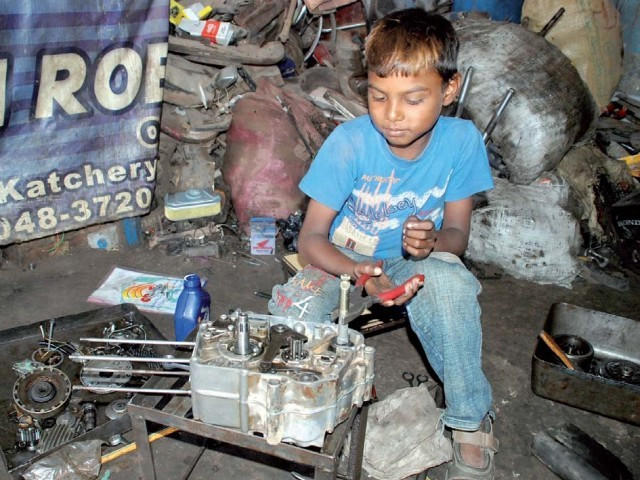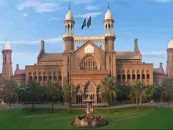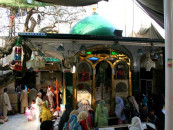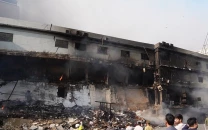Child protection: Rs180m to be spent to combat hazardous work
Pilot project will start in Jhelum, Chakwal, Layyah and Jhang.

The Department of Labour and Human Resource has announced the approval of a five-year project to combat the ‘worst forms of child labour’ in four districts of the Punjab. This, according to the Labour Welfare director, is the first provincial initiative to address the worst forms of child labour.
The pilot project, which is to be carried out in Jhelum, Chakwal, Layyah and Jhang, will span over a period of five years. The government will spend approximately Rs180 million under the Annual Development Programme. The pilot project will start, this year, with a survey of the worst forms of child labour to target the centres where it is most prevalent in the four districts.
Labour Welfare director Humayun Mazhar, speaking with The Express Tribune, said, “This is the first time such a project is being carried out by a provincial government on this scale. He said the project will receive technical assistance from the International Labour Organisation (ILO).
The project will focus on literacy services, skill development, model workshops and micro-credit schemes. In light of preliminary surveys, the project seeks to establish literacy centres in the target areas to facilitate the enrollment of children most prone to worst forms of child labour. The project aims to enroll as many as 2,000 working children under 14 in non-formal literacy centres whereas 2,000 working children over 14 are to be imparted skill training.
Mazhar added that families of working children enrolled in the literacy centres will also benefit from micro-credit schemes. “The ground reality is that when children are taken out from hazardous employments to be educated, arrangements have to be made to supplement the income they generated for their family,” he said, adding “here is where we will introduce micro-credit schemes.” The project will also include 50 model workshops which will educate and demonstrate ‘healthy employment’ ensuring safe working conditions for the young and adults.
However, many remain sceptical about the five-year project that aims to focus on a major socio-economic problem. Iftikhar Mubarak, programme manager at the Society for the Protection of the Rights of the Child, said it was vital to ensure that these projects are sustainable in the long run.
“These projects give outputs, but do these outputs bring about a change in the larger picture?” he said. He added that measures like imparting skills to adults can encourage them to undertake economic responsibility for their families instead of burdening the children with it.
The lack of data on child labour, particularly pertaining to the worst forms of child labour, makes addressing the issue difficult. The last reliable survey, the National Child Labour Survey (NLS), was conducted 15 years ago by the Federal Bureau of Statistics in collaboration with the International Labour Organisation.
According to the NLS, as many as 3.3 million children between 5 and 14 years of age were economically active in 1996. Punjab was found to have the highest number of children (1.94 million) engaged in child labour.
Centre for the Improvement of Working Conditions and Environment director Saeed Awan said several projects had been carried out by the ILO previously but it was the first time the issue had been taken up as a development project by the government. Awan said the project had been divided into two clusters focusing on areas in the north and south of Punjab. “The reason we chose these four districts is to ensure visibility of results,” he said. He added that larger districts required more resources.
“It took a while for us to get here but it is encouraging that the realisation is fast sinking in,” said Awan.
Published in The Express Tribune, December 16th, 2011.











1733130350-0/Untitled-design-(76)1733130350-0-208x130.webp)







COMMENTS
Comments are moderated and generally will be posted if they are on-topic and not abusive.
For more information, please see our Comments FAQ